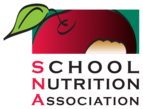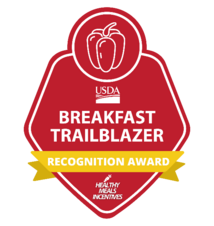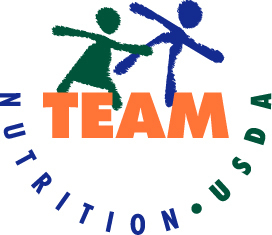SmartBrief - Daily news about school nutrition

Exploring the nutritional perks and risks of kelp
Kelp contains nutrients absorbed from the sea and is a low-calorie, nutrient-dense food that supports weight management and bone health and may reduce cancer risk, according to registered dietitian Natalie Romito, who offers suggestions on how to incorporate this type of seaweed into your diet. While generally beneficial, excessive kelp intake can cause iodine overdose, especially for those with thyroid conditions, Romito says, adding that "because [kelp] comes in different forms, there are many different ways to use it. It's an excellent way to add depth to your food's flavor -- and a burst of nutrition, too."
Full Story: Cleveland Clinic (10/8)
|

Top hydrating foods for your diet, according to RDs
Registered dietitians highlight 15 hydrating foods like watermelon, iceberg lettuce and cucumbers, which top the list with over 90% water content along with essential nutrients like potassium and magnesium. Citrus fruits, strawberries and tomatoes also provide significant hydration benefits, while yogurt and cottage cheese offer a combination of protein and water content, according to RD Amanda Baker Lemein and registered dietitian nutritionist Marisa Moore, who offer ways to incorporate these foods into meal plans.
Full Story: Women's Health (10/8)
|
Awards

Get Recognized as a Trailblazer in School Meals
The awards are designed to celebrate and share best practices in school meals taking place across the country! The Breakfast Trailblazer Award and Small and/or Rural School Food Authority (SFA) Breakfast Trailblazer Award recognize SFAs that provide nutritious breakfasts with limited added sugars and engage students in the planning of breakfast menus.
The award criteria include implementing at least two strategies to reduce added sugars. Examples include:
- Only unflavored milk is offered.
- All breakfast cereals contain ≤ 6 grams of added sugars per dry ounce.
- All yogurts contain ≤ 12 grams of added sugars per 6 ounces.
- No grain-based desserts are offered.
- Weekly breakfast menus have been modified to reduce added sugars to less than 10 percent of the calories.
To learn more, visit the Healthy Meals Incentives Recognition Awards webpage.
|

Healthy Meals Incentives Recognition Awardee Spotlight Webpage
The Healthy Meals Incentives Recognition Awards recognize and celebrate school nutrition programs across the country! Visit the Awardee Spotlight webpage to discover a collection of best practices that support the implementation of the final rule including reducing added sugars and sodium in school meals.
Stay Connected
Sign up to receive Team Nutrition updates in English and in Spanish.
|
Resources
CHILD NUTRITION (CN) LABEL
The Child Nutrition (CN) Labeling Manual is now available online. The CN Labeling Manual provides food manufacturers with instructions on how to apply for and obtain approval for a Child Nutrition (CN) label. It also contains instructions for calculating the contribution that meats, meat alternates, poultry, and seafood products make toward the meal pattern requirements for Child Nutrition Programs (CNP). CN labels are approved by USDA and provide a way for a manufacturer to demonstrate how a processed food product contributes to the meal pattern requirements in CNP.
FOOD BUYING GUIDE (FBG)
Two features WERE added to the Food Buying Guide for Child Nutrition Programs (FBG) Interactive Web-based Tool. Both features are available in the Tools menu on the toolbar:
-
Interactive flow chart on using the preparation yield walks users through when to use the Preparation Yield factor in the Recipe Analysis Workbook (RAW).
-
An Ounces to Pounds Calculator allows users to easily convert ounces to pounds and pounds to ounces to make converting units a breeze!
- New yields are now available in the Food Buying Guide for Child Nutrition Programs Interactive Web-based (FBG) Tool and FBG Mobile App! New yield data is available for: USDA Foods canned mixed fruit and canned beef, smoked salmon fillet, cactus fruit (prickly pear), purple rice, instant long grain brown rice, and quick cooking medium grain brown rice. Stay tuned for additional yield data releases coming soon.
 |
USDA POLICY MEMOS
Regulation requires sponsoring organizations and institutions to keep Bulletins, Instructions, and USDA Policy Memorandums for reference and to apply immediately the appropriate instruction to agency programs. Please call Child Nutrition Programs, if further clarification is needed.
All Policy Memos from USDA are located here:
SP 01-2025 Fluid Milk Requirements for School Meals
SP 02-2025 Substitution of Vegetables for Fruit Flexibility in the School Breakfast Program: Questions and Answers for Program Operators
Contact Us
Alaska Department of Education and Early Development
Division of Finance and Support Services
Child Nutrition Programs
P.O. Box 110500
Juneau, AK 99811
Disclaimer
This newsletter contains hyperlinks to information created and maintained by other public and private organizations. These links are provided for the reader’s convenience. DEED does not control or guarantee the accuracy, relevance, timeliness, or completeness of this outside information. Furthermore, the inclusion of links is not intended to reflect their importance, nor is it intended to endorse any views expressed, or products or services offered, on these sites, or the organizations sponsoring the sites.
Confidential Information
Confidential information should never be shared via email outside of the SFA’s email system. Since email can easily be transmitted to the wrong recipient or intercepted by a third party, it could lead to a breach of confidential information. When emailing Alaska Child Nutrition Programs, sponsors are encouraged to make arrangements with the recipient(s) to email documents with Zend To (https://drop.state.ak.us/drop/). Please contact DEED CNP for further information.
USDA Nondiscrimination Statement (English)
In accordance with federal civil rights law and U.S. Department of Agriculture (USDA) civil rights regulations and policies, this institution is prohibited from discriminating on the basis of race, color, national origin, sex (including gender identity and sexual orientation), disability, age, or reprisal or retaliation for prior civil rights activity.
Program information may be made available in languages other than English. Persons with disabilities who require alternative means of communication to obtain program information (e.g., Braille, large print, audiotape, American Sign Language), should contact the responsible state or local agency that administers the program or USDA’s TARGET Center at (202) 720-2600 (voice and TTY) or contact USDA through the Federal Relay Service at (800) 877-8339.
To file a program discrimination complaint, a Complainant should complete a Form AD-3027, USDA Program Discrimination Complaint Form which can be obtained online at: https://www.usda.gov/sites/default/files/documents/USDA-OASCR%20P-Complaint-Form-0508-0002-508-11-28-17Fax2Mail.pdf, from any USDA office, by calling (866) 632-9992, or by writing a letter addressed to USDA. The letter must contain the complainant’s name, address, telephone number, and a written description of the alleged discriminatory action in sufficient detail to inform the Assistant Secretary for Civil Rights (ASCR) about the nature and date of an alleged civil rights violation. The completed AD-3027 form or letter must be submitted to USDA by:
1. mail: U.S. Department of Agriculture Office of the Assistant Secretary for Civil Rights 1400 Independence Avenue, SW Washington, D.C. 20250-9410; or
2. fax: (833) 256-1665 or (202) 690-7442; or
3. email: program.intake@usda.gov
This institution is an equal opportunity provider.
|